Parts of a House
1. Chimney
If you have a fireplace, you probably also have a _____ so that the smoke can escape from your house.
2. Heater
What machine or system is used to warm up your house in the winter?
3. Air conditioner
How about to cool down your house in the summer?
4. Ceiling fan
This device used to cool down a room is typically found on ceilings.
5. Fire escape
If you live an apartment, you might find this set of ladders and platforms on the exterior of your building for emergencies.
6. Elevator
If you live an apartment, you might also use this to reach high floors instead of the stairs.
7. Den
This is a term for a small, comfortable room where you can do activities like read or watch TV in private.
8. Mudroom
This is a small room or entryway where you can remove your shoes before entering the house.
9. Powder room
What do you call a bathroom without a bathtub or shower?
10. Basement
What do you call the underground level of a house?
11. Attic
How about the highest level of a house, which is usually used for storage?
12. Vestibule / foyer
This is an antechamber, hall, or lobby you can enter before getting to the actual entrance of some houses.
13. Radiator
This a type of heater consisting of a tank and metal pipes located at the side of a room.
14. Roof
What do you call the outer layer found on the very top of a house?
15. Roof tiles
How about the individual pieces used to make the roof?
16. House plant
This is a general name for a plant found indoors.
17. Hallway
If you live in an apartment or a dormitory, you’ll have to pass through this corridor before you reach your front door.
18. Buzzer
People will need to ring this if they want to contact someone in an apartment.
19. Poster
You might have a _____ of your favorite band or artist posted on your wall, especially if you live in a dorm.
Rooms inside the House
1. Bedroom
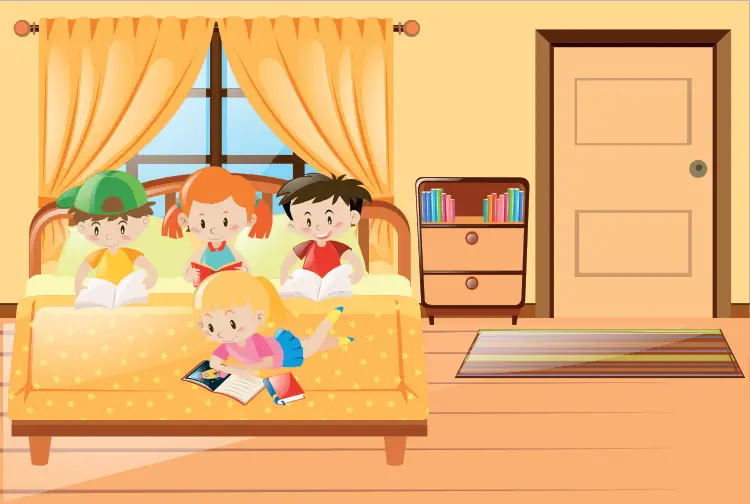
Bedroom Furniture Vocabulary:
1. Bed
- This is what you sleep on at night.
2. Twin
- The smallest sized bed is called a _____ bed.
3. King-sized
- The largest sized bed is called a _____ bed.
4. Bunk
- Two beds stacked on top of each other are called a _____ bed.
5. Mattress
- This is the part of the bed you actually sleep on.
6. Blanket
- You use this to cover yourself at night when you sleep, usually accompanied by sheets.
7. Duvet / comforter
- Instead of blankets and sheets, you can use something thicker to cover yourself. This is known as a _____.
8. Pillow
- What does your head rest on when you sleep?
9. Pillow case
- What do you use to cover a pillow?
10. Lamp
- You probably turn this light source off right before you go to bed.
11. Nightstand / bed stand
- You might put your lamp or books on a small table next to your bed, known as a _____.
12. Closet
- This is a small, separate room attached to most bedrooms where you can hang your clothes.
13. Dresser
- You can also keep your clothes in this piece of furniture, which contains stacked drawers.
14. Wardrobe
- If you want, you can hang your clothes in a separate piece of furniture called a _____.
15. Vanity
- This piece of furniture contains drawers and mirrors that you can use to do your makeup.
16. Window
- Where might the sun shine through into your bedroom first thing in the morning?
17. Window frame
- What do you call the actual wooden support of the window?
18. Windowpane
- How about the glass part?
19. Window sill
- What about the ledge along the bottom of the window?
20. Curtain
- What about the piece of cloth that can cover the window to block out sunlight?
21. Coat hangers
- You can put your clothes on these devices to make them easier to hang in your closet.
22. Alarm clock
- You can use this device to wake yourself up in the morning.
More for you:
64 Classroom & School Objects
2. Office / study
Office Supplies List & Names of Office Furniture (Infographic)
- Pen
- Pencil
- Markers
- Paper clips
- Tape
- Highlighter
- Eraser
- Sticky notes
- Labels
- Scissors
- Printer
Names of OFFICE furniture:
1. Desk
- This is a type of table used specifically to study or do office work.
2. Bookshelf / bookcase
- This is a piece of furniture used to store books.
3. Drawers
- Your desk contains many compartments known as _____, which can be used to store various items.
4. Chair
- If you’re working at your desk or sitting at a table, you’ll probably be sitting on this.
5. Rocking chair
- If the chair is large and can rock back and forth, it’s called a _____.
6. Grandfather clock
- This is a special type of clock that stands on its own and as a large swinging pendulum.
7. Picture frames
- What do you usually put photographs in to display them?
8. Desktop / PC
- A _____ is a computer that permanently sits on your desk.
9. Laptop
- A _____ is a small, foldable computer that you can carry around with you.
10. Outlet
- If you want to charge a device, you should plug the charger into an _____ in the wall.
11. Extension cord
- If the outlet is too far away, you can use this connecting wire to reach it.
12. Stationery
- This is a general term for pens, pencils, staplers, and other office supplies.
13. Globe
- What do you call a miniature model of the world that can be read like a map?
3. Living room
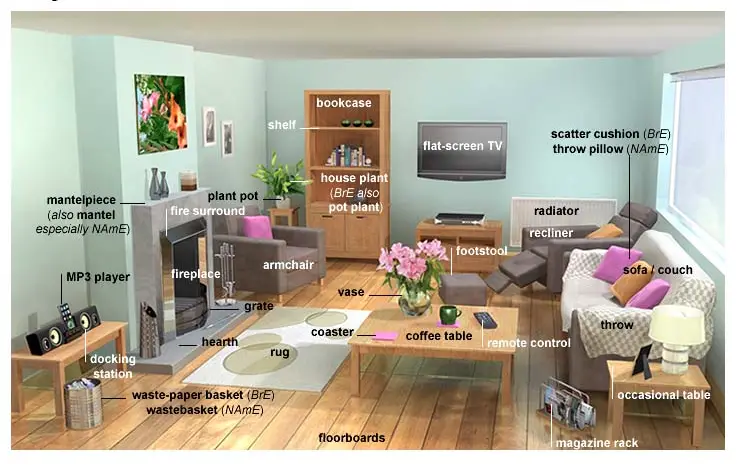
Living Room Vocabulary
1. Carpet
- This can be used to cover an entire floor to make it softer to walk on.
2. Rug
- This is like a carpet but doesn’t usually cover the entire floor.
3. Sofa / couch
- This is a large, soft chair, usually meant for several people to sit on.
4. Coffee table
- This is a low table typically placed in front of a sofa.
5. Television / TV
- You’ll often find this in a living room as a main source of entertainment for the family.
6. TV stand
- What piece of furniture does a TV usually rest on?
7. Side table
- This is a small table placed beside couches for drinks, books, etc.
8. Fireplace
- Where in the living room can you safely start a small fire?
9. Fire iron / poker
- This a long, metal instrument used to tend a fire.
10. Firewood
- What do you call the wood used to start a fire in a fireplace?
11. Futon / pull-out sofa / sofa-bed
- This is a type of sofa that can be unfolded to become a bed, in case you have a guest sleeping over.
12. Bean bag
- This is a squishy, shapeless chair filled with beans, beads, or something similar.
13. Speakers
- You can hook these up to your TV system to amplify the sound in the room.
14. Home theater
- If you have an elaborate TV system setup with speakers and a large screen, you might call it a _____.
More for you:
Bedroom Furniture Names in English
Office Supplies List & Names of Office Furniture (Infographic)
4. Bathroom
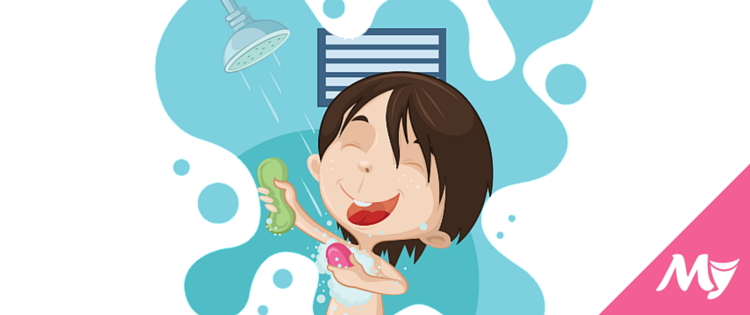
One of the most important places in the house, the bathroom!
Sometimes you might just want to escape and you can do so by locking yourself in the bathroom or taking a nice bath or shower. People love their bathrooms!
Bathroom vocabulary with pictures
1. Sink
- What device do you use to wash your hands in the bathroom or a kitchen?
2. Faucet
- What is the actual metal pipe in a sink that dispenses water called?
3. Mirror
- You use this to look at your reflection.
4. Bathtub
- You can fill this with water to take a bath, or stand in it to take a shower.
5. Shower stall
- If you don’t have a bathtub, you can still use this chamber-like booth to take a shower.
6. Shower head
- This is the actual device in a shower where water comes out of.
7. Shower curtain
- This tarp wraps around a bathtub or shower stall for privacy.
8. Tiles
- Many bathroom walls and floors are covered with these rectangular pieces of ceramic.
9. Toothbrush
- What do people normally clean their teeth with?
10. Toothpaste
- What do you call the cleaner used to brush your teeth with?
11. Floss
- You can use this piece of string to clean between your teeth.
12. Mouthwash
- You can also gargle this liquid to clean your teeth and get fresher breath.
13. Shampoo
- What do you normally clean your hair with?
14. Conditioner
- You can also use this after shampooing to make your hair look smooth and shiny.
15. Soap / body wash
- This is a basic cleaner used to wash your hands and body.
16. Loofah
- This is a ball-shaped sponge used to scrub your body with soap.
17. Washcloth
- You can also use this rag to scrub your body.
18. Towel
- When you finish showering or taking a bath, you’ll want to use this to dry off your body.
19. Towel rack
- Where do you usually hang your towels?
20. Drain
- What does water have to travel through in order to leave a bathtub or sink?
21. Toilet
- Most people will need to use this for a quick visit to the bathroom.
22. Plunger
- If a toilet becomes clogged, what can you use to unclog it?
23. Bidet
- Sometimes, you might find a _____, which is a basin used for watching yourself after you use the bathroom.
Here is where your beauty regime takes place and it is the room that helps to prepare you for the day ahead. There is so much vocabulary to do with this room that consists of verbs, nouns and adjectives. With each term mentioned, we will also discuss verbs and adjectives to do with that term.
The main vocabulary categories we will look at today includes:
Bathroom Parts in English
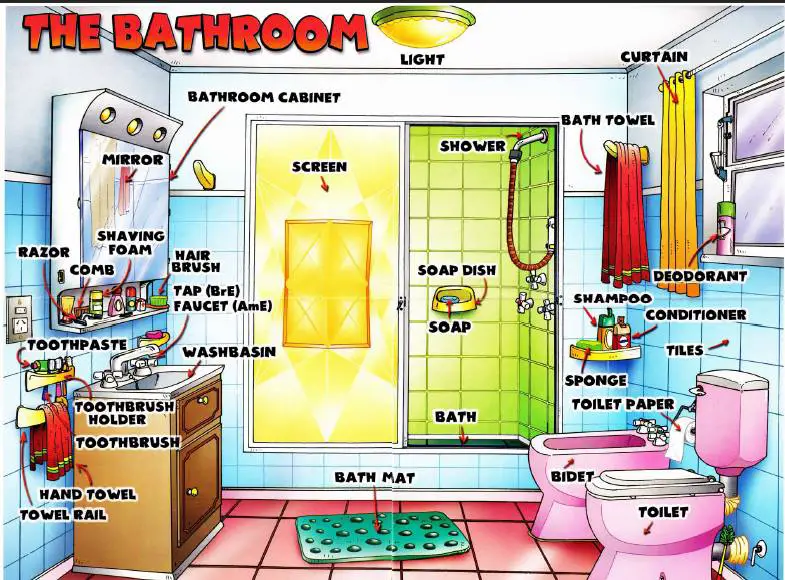
Bath and shower
Hopefully, you’ve taken one of these today!
You can use many verbs in this category:
- Take a shower/bath
- Have a shower/bath
- Have a wash
These all show that you are using the bath or the shower to wash yourself or clean yourself.
You can run a bath, which means that you turn on the taps and allow them to fill the bathtub with water. Often when people run a bath, they turn on the taps and then leave it to fill by itself as this can take a long time.
Just be careful that you don’t let the water overflow, which is when the water becomes so high that it goes out of the bath and onto the floor! This can be an awful experience.
A long shower or a bath can be the best tonic after a long day of work and stress! The world moves so quickly nowadays that we need time to think without screens or distractions.
Performing basic functions such as washing can bring us back to basics. You don’t have to think too much about washing, so you can think of other things. Some studies have even concluded that we are at our most creative when we are in the shower.
Take a look at this dialogue for talking about a bath:
Graham: What do you do to relax Elise?
Elise: I absolutely love having a nice long bath.
Graham: Really? You find that relaxing? I find it so boring to have a bath or a shower. It has to be quick for me.
Elise: Oh yeah! You have to try it. First I run the bath, which takes about twenty minutes. After I’ve turned the taps on I light some scented candles to help relax my senses. Then when the bath is full, I get my book so I can read while I am in the bath. Then I add some bubble bath. Once that is all done, I dim the lights and turn on a bit of music.
Graham: How can you relax with music on?
Elise: Well, I don’t listen to rock and roll! Just some quiet calm music to help me relax.
Graham: Oh okay, I understand.
Elise: It’s like a type of meditation for me, I don’t do it all the time, but it’s nice now and again to just sit back, relax and forget the world around me.
Graham: Interesting! Maybe I will try that sometime.
Some words you might not have recognised from that passage:
- Taps (US: faucets) – the devices on the bath used to fill the tub with water. There is usually one hot tap and one cold tap.
- Bubblebath – A soapy liquid used whilst the bath is filling to create foam that helps to clean you while you are bathing.
- Scented candles – Candles are normally used for light, but in this case they are scented which means that they have a smell. This usually something such as lavender or roses.
Dialogue for talking about a shower:
James: Dan, I am just going to take a quick shower.
Daniel: Quick? You’re never quick! Please don’t be too long today we need to use less water.
James: Okay, okay I will do my best but I like to stand in the shower and just relax.
Daniel: That’s great, but our water bill was very high this month, your relaxing is costing us a lot of money. All you need to do is get in the shower, use the shower gel and some shampoo, wash it off and get out.
James: That’s not true, sometimes I have to use face wash to keep my skin looking good.
Daniel: You can do that in the sink! You don’t need to stand in the shower just to wash your face.
James: But it’s nice! Plus sometimes I prefer shaving in the shower.
Daniel: Again, you can do that in the sink.
James: Well, scientists say that we are at our most creative state when we are in the shower. I need to think about where I want to go on holiday so maybe I should have a really long shower.
Daniel: No! Unless your creativity is going to make our water bill cheaper then please don’t do that! Here are some simple instructions: 1) turn on the shower 2) get in the shower 3) wash your hair 4) wash your body 5) get out of the shower and dry yourself. It’s all very simple and should take less than 10 minutes!
James: You forgot the conditioner, I need to keep my hair nice and healthy.
Daniel: Fine! Add that to the list, but that should still be less than 10 minutes!
Some words you might not have recognised from that passage:
- Shower gel – Soapy fluid used to wash your body.
- Shampoo – Soap designed specially to wash your hair.
- Conditioner – Fluid designed to keep your hair healthy and soft.
- Face wash – Soap designed especially for the skin on your face.
- Water bill – The amount of money you have to pay for your water usage, usually every month.
- Sink – The small basin with two taps that is normally used to wash your hands.
Some people prefer taking showers, others prefer having a bath. It depends on how much time you have if you don’t have time then you should probably choose a shower. Also, a shower uses less water than a bath and can be cleaner as well.
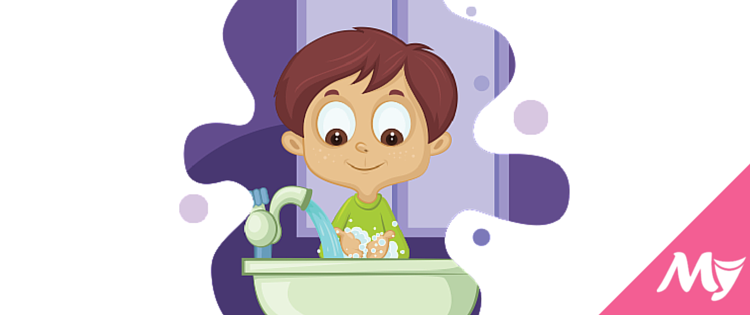
Toilet
Okay, let’s get it out of the way, the toilet. How can we talk about this without sounding vulgar and being rude?
This is a delicate one but I think we can get past it!
The main words we use when talking about the toilet in the English-speaking world are:
Formal: The toilet (UK), the bathroom (US), the washroom (Canadian), the lavatory (all)
Informal: The loo (UK), the bog (UK and New Zealand), the dunny (Australian), the John (US), the potty (UK and US for younger children)
Try to stick to the formal ones when you are with people you may not know very well! If you use slang in a formal situation, it might not reflect well on you and may leave a bad impression.
However, if you are with friends, try to use their local term! They will laugh purely because you know the slang word as a person who doesn’t speak English natively.
As for verbs to use in this section, let’s take a look at the possibilities:
- I’m going to the toilet/bathroom.
- I’m going to use the toilet/bathroom.
They both mean the same thing but you can add to use at your leisure.
Here’s a dialogue of a family in a restaurant to help your understanding:
Child: Mummy, mummy! I need the potty!
Parent: Okay, Harry, let’s go and find one. Excuse me, is there a toilet in here?
Waiter: Yes there certainly is, it’s round the corner and to the left. It’s labelled lavatory.
Parent: Great, thanks, come on then Harry, let’s go to the loo.
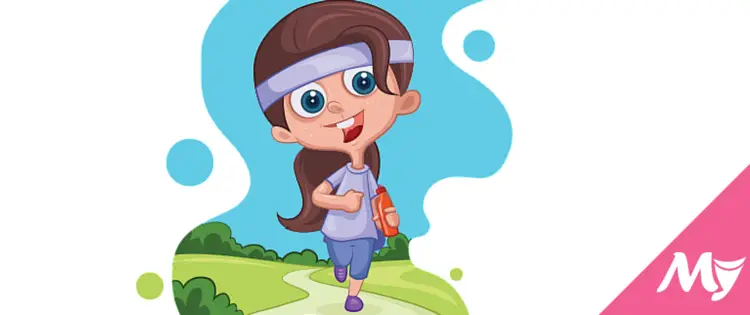
Beauty regime
We come to the most important part of a day for many people!
There are literally thousands of products that claim they can make you more beautiful in no time. Some products help, but some are just selling expensive chemicals.
Here are some words you are likely to see in the beauty product world:
- Anti-ageing – Describes product that stops you looking old.
- Moisturising – Something that stops your skin feeling and looking dry.
- Cleansing – A product that is cleansing will clean whatever part of the body it is intended for.
- Aromatic – The product will have a smell.
- Conditioning – This will help to keep a certain body part healthy.
- All-day – The product will stay active all day without you reapplying
- Defining – This means that one of your features will be enhanced.
- Dermatologist – With skincare products you will often see the label dermatologically tested or approved. This means that a dermatologist who is somebody that is a skin specialist has said that the product is safe for use.
- Easy-to-use – Don’t overthink it! The product is used without difficulty.
- Exfoliating – Helps to remove layers of dead skin with little beads.
- Facial – The product is for use on the face.
- Firming – Skin will be tighter, making you look younger.
- Gentle – The effect of a product will not be too harsh for your body.
- Boosting – Making one of your features stand out.
- Hydrating – Making sure your skin or hair is not dry.
- Illuminating – Giving you a glow! Some of your features seem brighter and clearer.
- Regenerating – Helping old cells to grow again and fighting the ageing process.
- Waterproof – The product will survive interactions with water.
Of course some of these terms will not actually come true but products are always worth a try! Just don’t spend too much money on them as they can be very, very expensive.
So many people want to look better and younger that the companies can charge pretty much whatever they want!
Gina: Hey Faye, what’s that you’re putting on?
Faye: It’s my new moisturiser, it’s anti-ageing, boosting and firming. It feels so good on my skin!
Gina: Oh wow, how much was it?
Faye: 7 pound for a bottle.
Gina: Oh my! That’s very expensive!
Faye: Yeah I know, but it’s worth it, believe me.
Gina: I know what you mean, I always pay more for a product that works. I pay ten pound a bottle for my leave-in conditioner.
Faye: Really? What’s it like?
Gina: It’s great! it’s hydrating, aromatic and lasts all day.
Faye: I’ll have to try that one. My new shampoo dries out my hair so I need something that’s gentle and easy-to-use.
Gina: Yeah, give it a try, I know how important your beauty regime is to you!
Faye: We are the same! We like trying to look beautiful and there is nothing wrong with that.
Gina: Agreed!
Do you spend a lot of money on beauty products? Let us know in the comments about what your favourite products are!
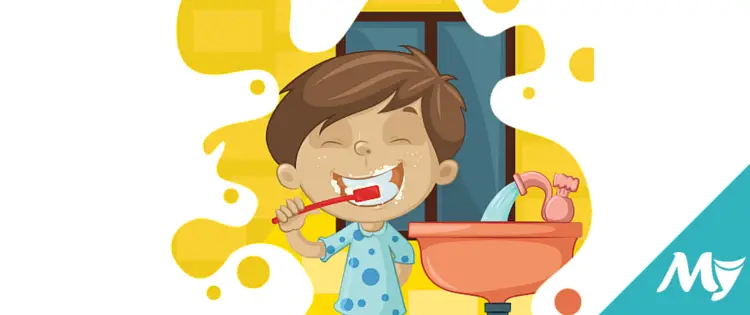
Etiquette
There is so much etiquette involved with the bathroom and it’s important to understand that! Etiquette is a set of things that you should do (but you are not forced to do) when you do something.
Take a look at the dialogue below and afterwards we will take a look at all the terms you may not know:
Derrick: You took a long time, where did you go?
Lucy: Well, I was trying to go to the toilet but I gave up waiting.
Derrick: What? What happened?
Lucy: I went to use the toilet, which is unisex, and on the door it said vacant because, as I later discovered, the gentleman inside had not locked the door.
So, then I had to shut the door and wait. I waited and waited and waited. Eventually, I became worried that the man might have passed out because he had been in there for ten minutes. I decided to knock on the door.
The man shouted that the toilet was occupied, which I thought was very rude. Then when he eventually came out of the toilet he didn’t hold the door open for me to enter.
I went to sit on the toilet but the man had left the toilet seat up, so I nearly fell in! The worst part, he hadn’t flushed the toilet and I don’t know if he washed his hands.
Derrick: What a terrible man! I would like to talk to him! He needs to learn some manners.
Some terms you may not have known:
- Unisex – When a toilet, or any facility is designed for both men and women.
- Vacant – When something is empty or available. On a toilet, if you lock the door it will show as “engaged” or “occupied”.
- Knock on the door – A polite way of checking if a facility is vacant or engaged. You make a noise on the door with your hand.
- Hold the door (open) – If you hold the door for somebody you keep the door open so that somebody else can pass through. This is seen as polite and expected behaviour.
- To leave the toilet seat up – When men use the toilet and don’t sit down, they should lift the toilet seat to avoid mess. After usage they should then lower the seat to its original position so that other people (particularly women) can sit without complication or difficulty. If someone doesn’t do this, they are leaving the seat up.
- To flush the toilet – Also written as to flush the chain, this is the process of emptying the toilet. The device that you pull or press to allow the toilet to empty is called the flush or the chain depending on where you are in the world!
- To wash your hands – If someone washes their hands, they use the sink and some soap to wash bacteria off of their hands. This is not only done after the toilet, but also before mealtimes.
- Manners – a group of behaviours that are accepted as good etiquette.
Etiquette is so important and it’s so easy to follow, so make sure you do that for other people. Treat others as you wish to be treated. It’s especially important in delicate situations like the bathroom. We all need to use it so we should make sure that it is clean and acceptable for everybody. That’s good manners.
So what do you think? Any problems? Any questions?
I hope you enjoyed your guide to everything to do with the bathroom in English! Please leave a comment below if you want something clarified.
More for you:
Human Body Parts in English!
SHOPPING Phrases, Dialogs and Phrasal Verbs!
Spa Fitness Gym Workout Massage Vocabulary and Dialogs
What Happens if You Don’t Drink Enough Water Daily?
AT THE DOCTOR Dialogues and Vocabulary List
8 Creepy Idioms Related to Body Parts [Infographic]
5. Kitchen
Kitchen Vocabulary
1. Cupboard / cabinet
- Where do you usually keep your dishes and cups?
2. Counter / countertop
- This is a flat surface where you can do most of your food preparation in a kitchen.
3. Oven
- If you want to bake something, you have to cook it in an _____.
4. Stove / stovetop
- What do you call the top part of an oven where you can cook with pots and pans?
5. Burner
- Where does the fire come out of in a stove?
6. Microwave
- This is a smaller device used to heat up food or cook fast TV dinners.
7. Island
- If you have a separate counter sitting in the middle of your kitchen, it’s normally called an _____.
8. Silverware
- This is a general term for forks, knives, and spoons.
9. Utensil
- This is a general term for any tool that can be used in the kitchen.
10. Pot
- What kind of utensil can you use to boil something?
11. Pan
- What kind of utensil can you use to fry something?
12. Rice cooker
- What can you use to make freshly steamed rice?
13. Slow cooker
- What can you plug in and use to cook a stew over a long period of time?
14. Toaster
- What can you use to toast your bread?
15. Toaster oven
- This is a sort of miniature oven used to bake small amounts of food, like a baked potato.
16. Blender
- If you want to make a smoothie, you can mix all the ingredients in a _____.
17. Whisk
- If you need to mix eggs or whip them into a meringue, you probably need a _____.
18. Tongs
- If you need to take bacon out of a pan, you should probably pick them up with _____.
19. Chopsticks
- A pair of sticks used to pick up your food, usually Asian cuisine, is called _____.
20. Refrigerator / fridge / icebox
- What should you use if you need to chill your food or keep it cold?
21. Magnets
- What do people usually attach to the sides of refrigerators for decoration?
22. Freezer
- This is a compartment of the refrigerator that keeps food at even colder temperatures.
23. Minifridge
- This is a tiny refrigerator, commonly found in college dormitories.
24. Groceries
- This is a general term used for food that you buy at the supermarket.
25. Garbage disposal
- This device, which shreds up food and disposes of it through plumbing, can be installed and attached to your sink.
26. Trash can / rubbish bin
- What do you call a bin used to dispose of waste?
27. Compost bin
- What do you call a container used to store decomposing food that can later become fertilizer?
28. Bread box
- This is a special container used to store bread.
29. Pipes
- A plumber will typically work on these if you’re having problems with your sink.
30. Plates / dishes
- When you eat a meal, your food usually rests on _____.
31. Glasses / cups
- Meanwhile, you’re beverages are usually contained in _____.
32. Mug
- This is a cup specifically used to hold coffee or tea.
33. Dish soap
- This is a cup specifically used to hold coffee or tea.
34. Sponge
- You can use this to scrub soap on your dishes.
35. Dishwasher
- Or you can use this special device to clean your dishes for you.
36. Stool
- This is a chair with its seat higher than usual and often without a supporting back.
More for you:
24 Kitchen Action Verbs with Images
30 Housekeeping Duties: Chore list & phrases with their meaning and examples
6. Dining room
Dining Room Furniture Vocabulary
1. Dining table
- This is a table where families usually eat meals together.
2. Placemats
- You can set these under your plates to protect the table.
3. Coasters
- Likewise, you can place these under your drinks.
4. Centerpiece
- If you want to add some decoration to your dining table, you can place a _____ in the middle of your dining table.
5. Candles
- You can light these for a romantic dinner.
6. Chandelier
- This is a special set of lights that hang from the ceiling of very luxurious houses or buildings.
Areas of a House
7. Front entrance
Front Entrance Vocabulary:
1. Front door
- What will visitors usually knock on when they visit your home?
2. Doorbell
- Or they can ring this instead.
3. Welcome mat
- This is a sort of small rug that you can put in front of your door for visitors to step on.
4. Porch
- This is an open area in front of the entrance to some houses that’s covered by a roof and might contain some columns.
5. Porchlight
- If it’s dark outside and you want to hang out on the porch, what should you turn on?
6. Mailbox
- What should you open to check your mail?
7. Lock
- You might want to make sure this is secure if you don’t want anyone invading your home.
8. Curb
- This is a part of the street between the actual road and the sidewalk where grass grows.
8. Garden
Garden Vocabulary List:
1. Fence
- This is a barrier that guards the perimeter of your home.
2. Gate
- You can get past a fence through an entrance called a _____.
3. Lawn
- This is what you call a long stretch of grass, either in front of or behind your house.
4. Lawnmower
- If the grass in your backyard is getting a bit long, you might want to pull out your _____.
5. Garden
- Many people like to grow flowers, fruits, and vegetables in a _____ in their backyard.
6. Vegetable patch
- This is a small garden where vegetables are grown.
7. Sprinklers
- To water your grass regularly, you can install a system of _____.
8. Hose
- Or you can water your grass and gardens by hand using a _____.
9. Shed
- This is a small roofed structure that can be used to store items like lawn mowers, ladders, and bikes.
10. Garage
- This is a slightly larger structure, often attached to the house, where you can park your car and store other items.
11. Driveway
- If you don’t have a garage, you can park your car in this area.
12. Shovel
- When it snows, you should use this to move it out of your sidewalks and driveway.
13. Snowblower
- Or you can use this machine to blast the snow out of the way.
14. Rake
- You should use a _____ to move leaves out of the way during autumn.
15. Swing
- Sometimes, you can find this tied to a tree. Kids like to sit on it and rock themselves back and forth.
16. Treehouse
- What do you call a small fort for kids built into a tree?
17. Patio
- This is a paved area in the backyard next to the house where you can sit and relax.
18. Firepit
- What do you call a fireplace located outdoors?
19. Hot tub / jacuzzi
- Sometimes, you can relax in a small pool of warm water called a _____.
20. Gravel
- What do you call the small, loose stones that often make up a walkway?
9. Laundry room
Laundry Vocabulary:
1. Washer
- What machine should you use to soak your dirty clothes?
2. Dryer
- What machine should you use to dry off your wet laundry?
3. Detergent
- This is a type of soap meant specifically for clothes.
4. Laundry basket
- Where do most people keep their dirty clothes before washing them?
5. Clothesline
- If you want to air dry your clothes, you should hang them on a _____ outside.
6. Dryer screen
- This filter catches all the lint from your clothes in the dryer.

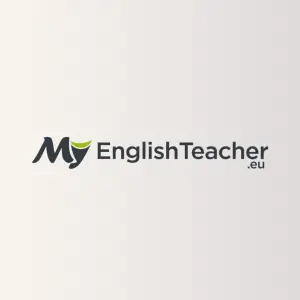


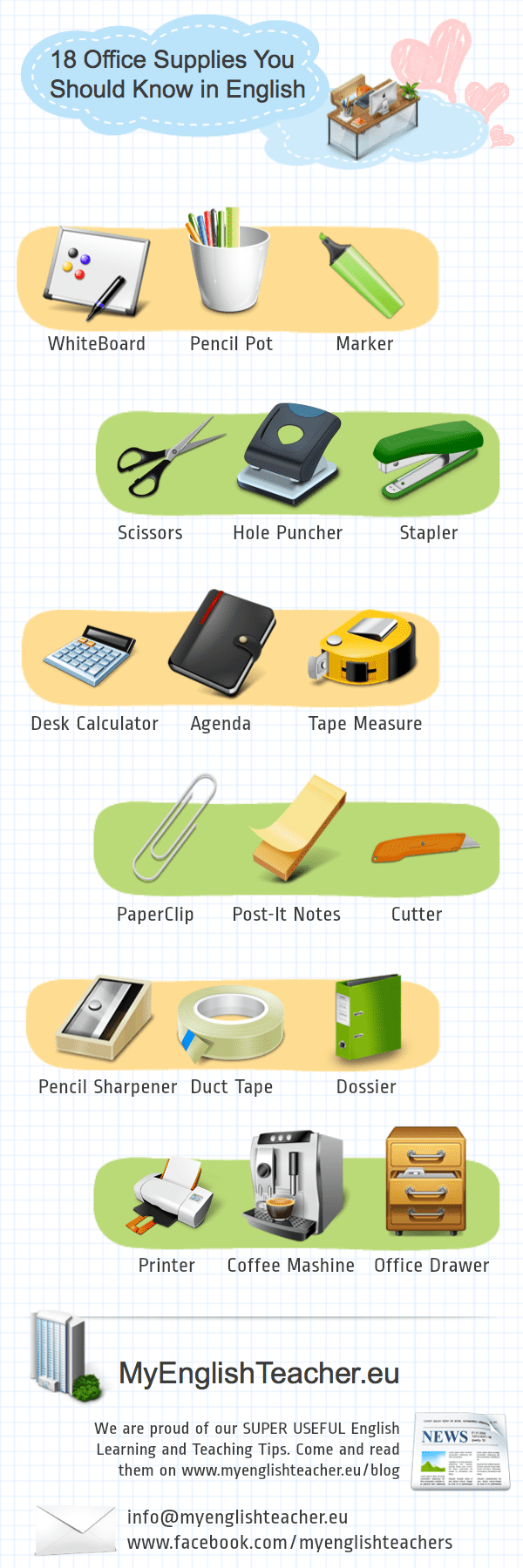

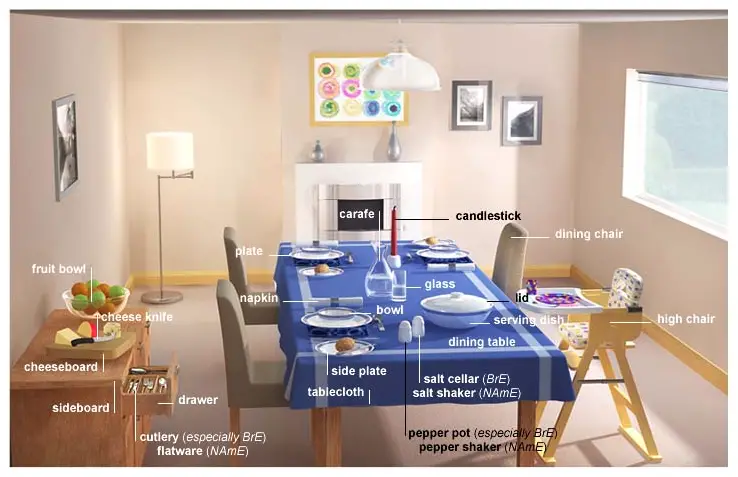
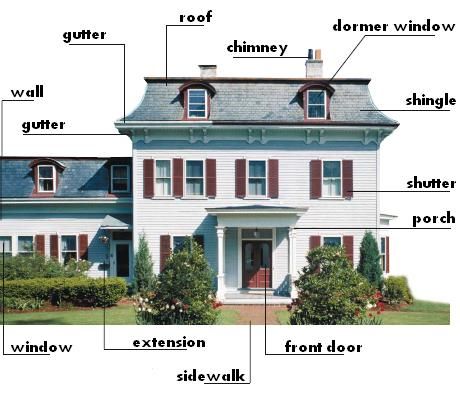
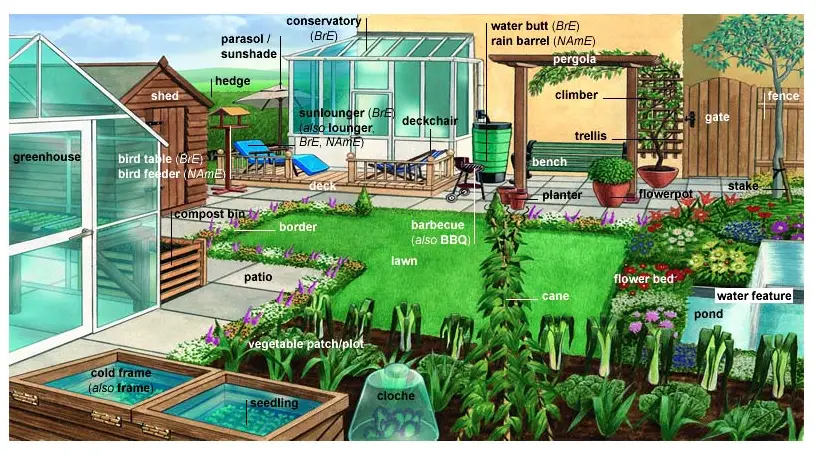
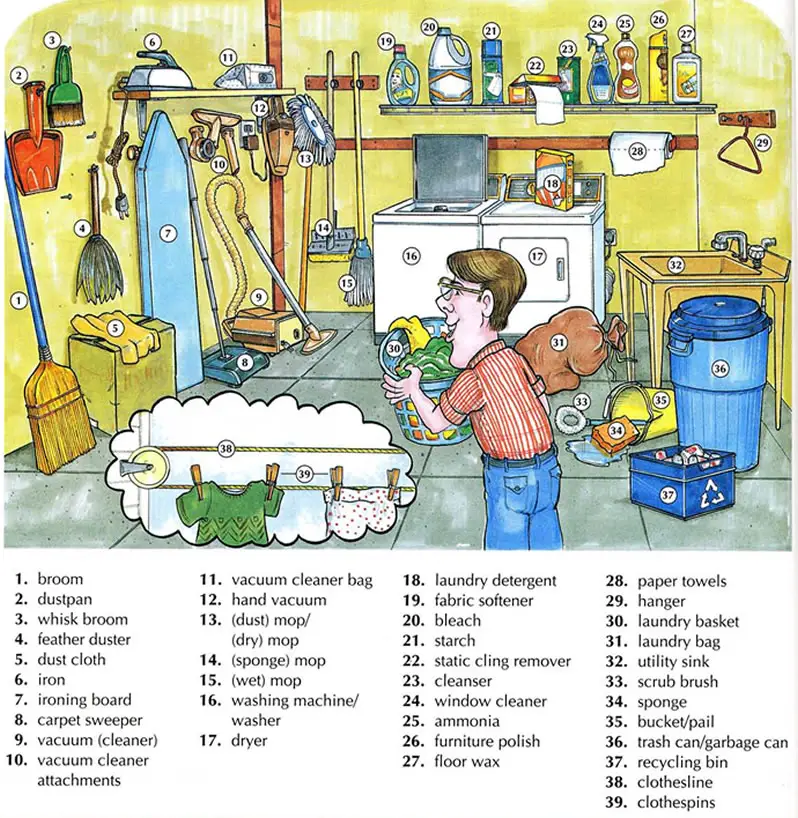


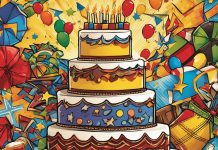


![Names of Generations, Years and their Characteristics [Generations Timeline] Names of Generations and years: The Greatest Gen, Baby Boomers, Gen X, Y, Z](https://www.myenglishteacher.eu/blog/wp-content/uploads/2020/06/Names-of-Generations-218x150.png)
















I truly appreciate the fine work done with appropriate vocabulary. This kind of detailed picture is rare to find. It was easy for me to teach the vocabulary to my middle school grade six students.
Thank you so much Doreen for your kind words!